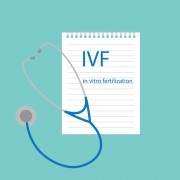Women’s Wellness , Fertility & IVF
"Shoebox IVF" may give hope for infertile couples
Researchers pioneer more affordable IVF system

A pared-down in vitro fertilisation (IVF) system that fits into a shoebox and utilizes cheap ingredients you might find in a kitchen cupboard may be the solution that infertile couples the world over are looking for.
High costs traditionally associated with fertility treatments render them unaffordable to most couples. The biggest cost involved in the procedure is the high price of sophisticated, state-of-the-art labs where the in-vitro egg fertilisation takes place.
To address this problem, Belgian obstetrician Dr Willem Ombelet and embryologist Jonathan Van Blerkom pioneered a cheap, shoebox-sized portable lab, containing nothing more than an aluminium heating block and a pair of test tubes.
Researchers recreate lab conditions
By mixing baking soda and citric acid to give off CO2, researchers were able to create the optimal levels of CO2 concentration and alkalinity that are present in an IVF lab. They mixed precise quantities of citric acid and baking soda in one test tube; then, the CO2 bubbles this created were fed into a second test tube containing a culture medium for the embryo.
To maintain the perfect temperature for egg fertilisation and embryo development, Van Blerkom experimented with various low-tech methods, including placing the test tubes in a thermos at the right temperature, as well as in an aluminium-heating block.
Once an ideal atmosphere is created and stabilised, the egg and the sperm are injected into the test tube containing the culture medium. The next day, the test tube goes under a microscope to see if it contains an embryo. If a successful embryo is created, it is transferred from the test tube to the woman’s womb after about six days.
More affordable than traditional IVF
Human trials of the system have been conducted inside sterile laboratories; however, a self-contained unit to house the system is currently being developed for hospitals or health care systems that don’t have advanced sterile lab facilities. This would provide heated, sterile air and space for doctors in less developed areas to examine the embryo under a microscope.
Trials for the system began in Belgium in 2012. 17 healthy babies have been born using the system since then, and the fertilisation and pregnancy rates are similar to expensive IVF methods at a 70 to 80 percent lower cost. According to Dr Ombelet, each IVF cycle using the system costs less than 200 euros (US$272), not including staff and medication costs, which vary from country to country.
"With very low dose medication schemes we hope to perform IVF in developing countries for less than 500 euros (US$681),” Dr Ombelet says.
Further links:
Bbc.com
Related Articles
Women’s Wellness
Breast cancer: will I need to remove my breast?
Dr See Hui Ti from Parkway Cancer Centre addresses a common fear that women have
Read moreWomen’s Wellness
#SmearforSmear campaign kicks off
Women smear their lipstick on social media to raise cervical cancer awareness
Read moreWomen’s Wellness
3-D Mammography for breast cancer detection
3-D Mammograms detect significantly more cancers with fewer false findings than standard tests
Read moreLatest Articles
Medical Care
Achieving Swift Recovery: Enhanced Recovery (ERAS) Direct Anterior Approach Total Hip Replacement
Consider total hip replacement with Alps Orthopaedic Centre's ERAS Direct Anterior Approach for faster recovery and reduced hospital stays. Learn about Dr. Jerry Chen's expertise in Singapore.
Read moreMedical Care
Enhanced Recovery (ERAS) Total Knee Replacement
Discover how Alps Orthopaedic Centre's Enhanced Recovery After Surgery (ERAS) approach transforms total knee replacement into a day surgery, offering faster recovery, less pain, and reduced hospital bills. Learn about Dr. Jerry Chen's expertise and schedule your appointment in Singapore.
Read moreMedical Care
Clinical Exercise Physiologist (CEP): The Emerging of Exercise is Medicine
How Exercising can be a Medicine
Read more